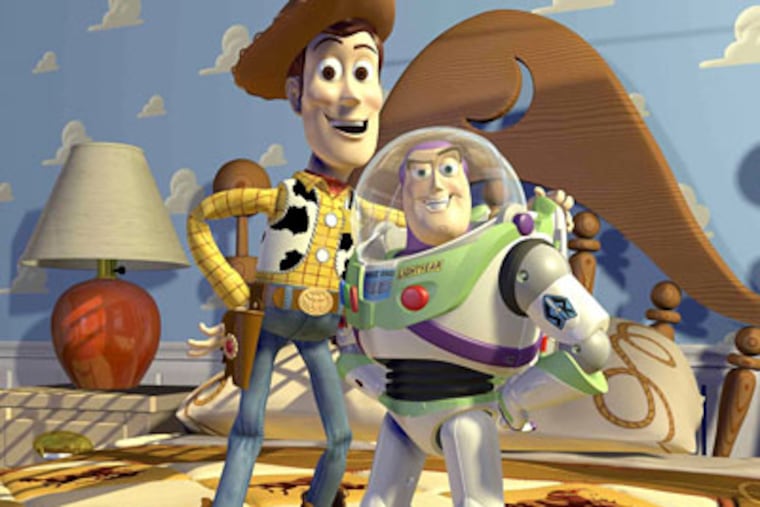'Toy Story 3' cast confronts a rite of passage & pulls at our heartstrings
"Toy Story 3" continues Pixar's unique tradition of sending grown men out of the theater pretending they're not crying.

"Toy Story 3" continues Pixar's unique tradition of sending grown men out of the theater pretending they're not crying.
Pixar is the only big-time animator that routinely tells stories about melancholy and loss, and "TS3" (3-D) has those elements - likely to inspire misty yearnings for lost youth, lost toys or a lost culture that encouraged children to play with toys rather than electronics.
Yet there is also something a little un-Pixarlike about "TS3" 3-D, starting with the recurring number "three."
Absent its responsibility to Disney's balance sheet, you wonder whether Pixar's groundbreakers would have undertaken something as commercial as a threequel. (The Disney-Pixar merger was precipitated, in part, by a Disney threat to make cheap "Toy Story" sequels for the DVD bin.)
Or make the unnecessary jump to 3-D. Pixar animation was revolutionary because it used computer imaging to provide the illusion of three dimensions. The 3-D process adds little to Pixar's visual panache, while risking problems associated with the new exhibition technology. (The screening I saw was blurry and strobey when the characters moved.)
Yes, there's a little magic in "TS3" 3-D, but there is also, somewhere in the distance (if not the title), the ring of a cash register.
There are big-brand toys in the mix, Ken and Barbie (Ken is voiced by Michael Keaton), pop songs dropped into the soundtrack, and a string of jokey movie references that make "TS3" much more punchline-dependent that a typical Pixar film.
And when, at one point, Buzz Lightyear is accidentally switched to Spanish mode, you can't help but wonder if some Disney demographer wasn't in the story meeting.
So, "WALL-E," it ain't.
But "TS3" is nonetheless an ingratiating crowd-pleaser. And it complements the first two movies by returning to a consistent franchise theme, obsolescence.
The original had Old West Woody displaced by the futuristic Buzz. The sequel had a damaged Woody ("No toy lasts forever") struggling to maintain active status. In "3," a new peril emerges - little Andy has grown up, is off to college and his toys face a fate worse than a garage sale.
It's called Day Care. Donated to a local center, the toys are set upon by oozing, drooling tots - loved nearly to death.
Pixar presents the day-care center as a prison for toys, using old movies (like "Cool Hand Luke") to model prison hierarchies, wherein newcomers receive the worst hazing and treatment.
You sense manifestation of sequel anxiety in the story. "Shrek 4" turned out to be a movie about contractual obligation, "TS3" is about captivity.
Still, Pixar makes the most of it. The "joint" is run by a ruthless pink teddy bear (voice of Ned Beatty), a funny contrast of image and personality.
And of course there are old favorites Woody (Tom Hanks) and Buzz (Tim Allen). They drive the action by engineering an escape, made necessary by Woody's belief that Andy wants the toys in the attic, not day care. As a premise, it's a bit labored (the movie is 102 minutes), but it leads to an undeniably big payoff, with Andy finding an elegant, moving solution to the problem of outgrown toys, and Pixar once again turning on the waterworks.